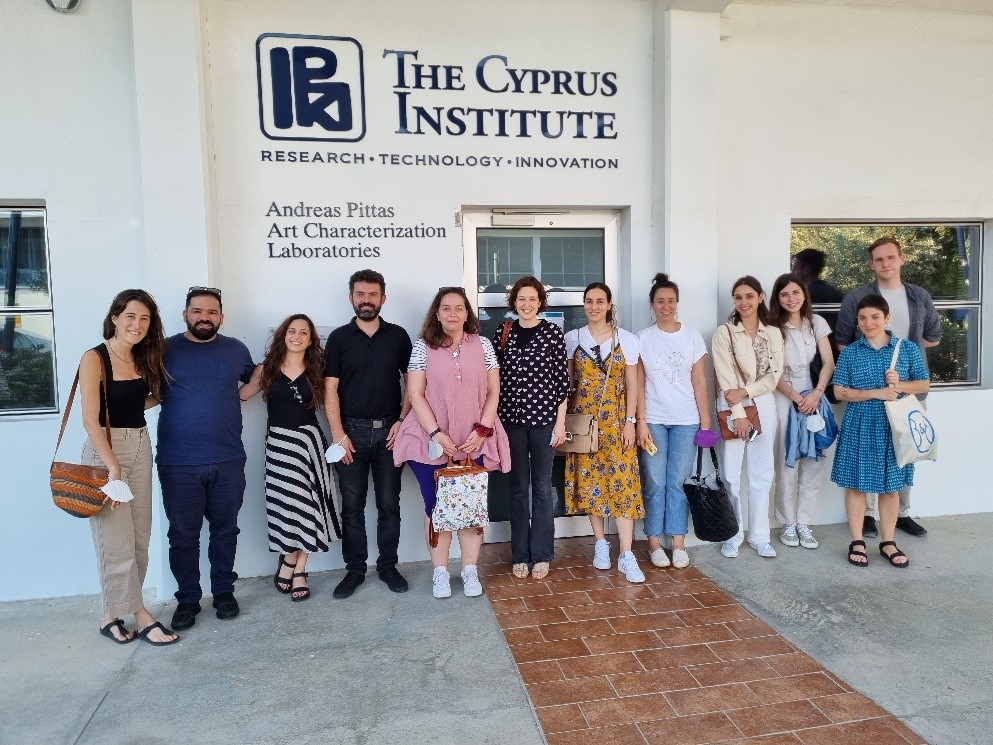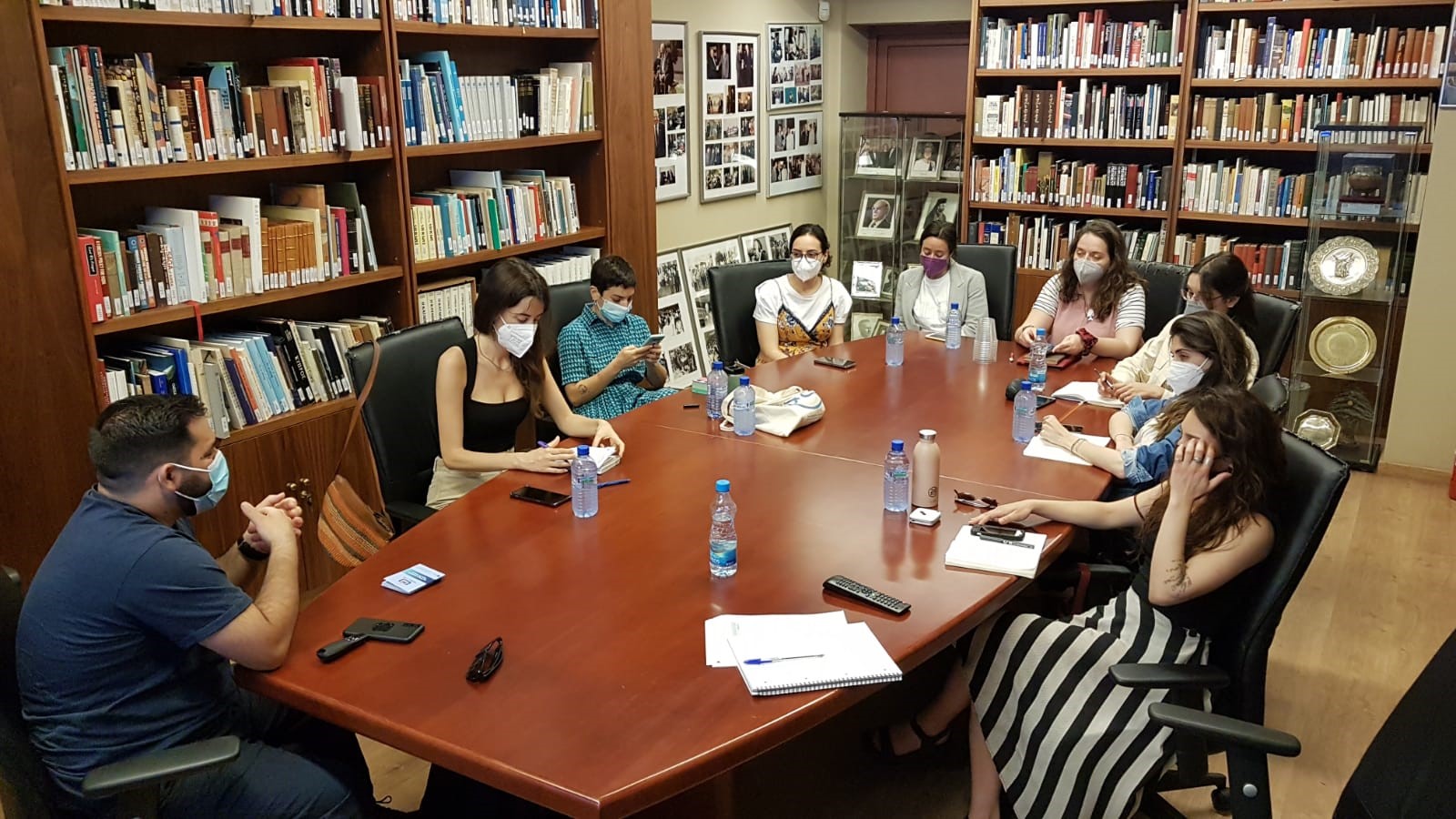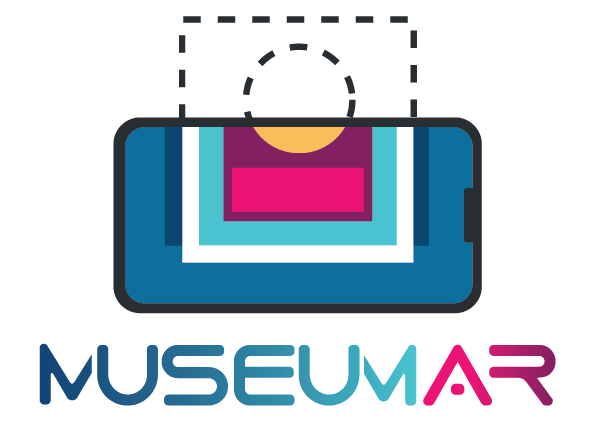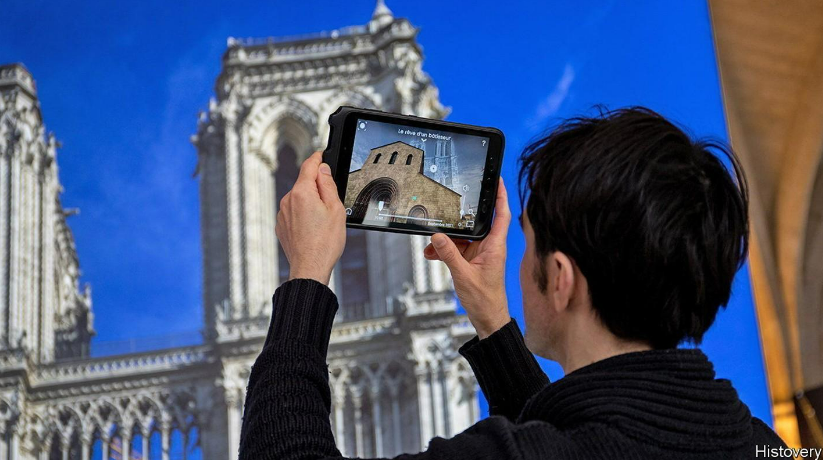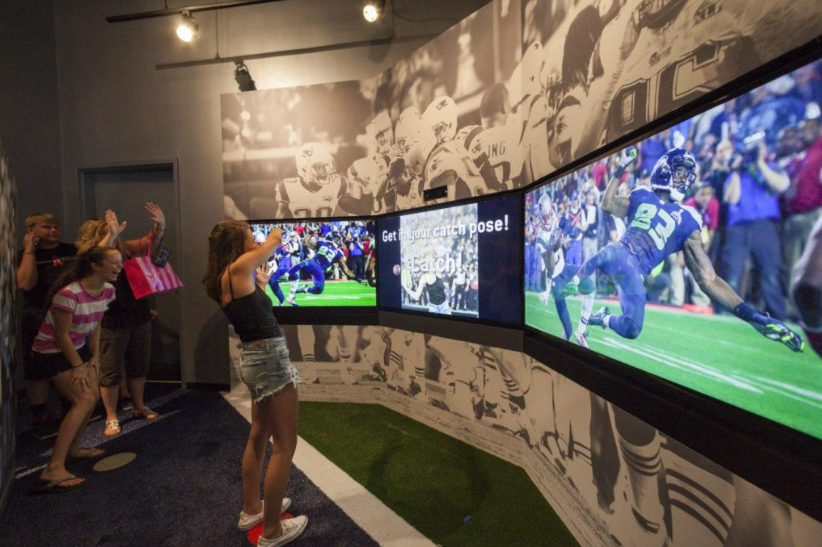News
Storytelling is key to the museum experience, so what do you get when you add tech? Curator-led, non-linear digital tales.
The Night at the Museum is a children's picture book by Milan Trenc – later, a Hollywood blockbuster – that told the story of a New York museum nightwatchman discovering, to his horror, that at night the building's exhibits came to life. The basic premise of the story, however far-fetched, is that this dusty museum suddenly became even more interesting if the exhibits were telling their own story, although it did still involve being chased by a Tyrannosaurus Rex.
Museums around the world today face the challenge of increasing and maintaining visitor numbers, especially with younger audiences. A fall in visitors is seen by most as a negative outcome, both financially and in terms of wider social and educational impact. It can happen due to a range of factors, but one of the most important is that museums can often find themselves competing with the products of the entertainment industry, which at its heart is in the business of telling a good story.
Don't get us wrong, storytelling is certainly not absent from museums. It's one of the most important factors behind the emergence of the so-called new museology doctrine, which brought storytelling to the forefront of the museum experience through audio guides, video and by placing more emphasis on thematic organisation and different perspectives, such as varying cultural interpretations.
Taking this trend further is the emergence of interactive digital storytelling, which combines participation with automatic story generation and narration to focus in on making storytelling more personal and mobile. It's edutainment – something that both educates and entertains for a more engaging, adaptive and fundamentally enjoyable visitor experience.
One of the most successful real world uses of interactive digital storytelling is augmented reality (AR), such as that employed to great effect at the British Museum. The technology transformed the museum experience for a child into a story puzzle using a dedicated tablet app. The app sets up a game, A Gift for Athena, which rewards the visitor for finding certain statues from their outlines by telling them more about the exhibit and directing them into the next stage of the game.
The EU-funded Chess project (a shorter name for the much longer Cultural Heritage Experiences through Socio-personal interactions and Storytelling) takes digital storytelling much further and plans to make interactive content such as games and augmented reality available to the entire museum sector.
The project relies on visitor profiling, matching visitors to pre-determined "personas" – which are designed as a representative description of the various people that constitute a given museum's visitor base. These are created through data from surveys, visitor studies and ethnographic observations. A given visitor is matched initially through a visitor survey to one of several representative personas, which in turn influences fundamentally the experience delivered by the Chess system.
Doing this makes the visitor experience non-linear. The system constantly adapts to a visitor's preferences. For example, if a visitor fails in a game or stays longer in front of certain artefacts, the system can adapt the storyline. It makes the experience more dynamic and relevant, so instead of sending the visitor to X exhibit, the system might instead choose to send you to Y exhibit, where you will get more information that's relevant to what you've shown an interest in.
Interactive tours can be created by the museum curators themselves rather than by IT programmers. It gives museums the chance to constantly create new experiences to try to get people to visit more than once.
We've been testing the project at the Acropolis Museum in Athens, Greece, where the team used the technology to bring a collection of architectural and sculptural remains to life by using AR to restore colours and lost features. Similarly, at the Cité de l'Espace in Toulouse, France, the project has been used to bring space flight and the layout of the universe to life.
Our next step is to commercialise the Chess project via an app and alongside the results of other EU cultural heritage projects, it will hopefully constitute an important step in implementing the digital agenda for Europe.
Storytelling is at the heart of an engaging experience and this is a recognition that has been at the core of many a successful museum over the past decade. Hopefully, as projects such as ours come closer to final development, we will see a continued digital renaissance in the European museum sector, making our cultural past interesting, engaging and relevant for the visitor of the future.
Prof Yannis Ioannidis (University of Athens), Dr Olivier Balet (Diginext) and Prof Dimitrios Pandermalis (the Acropolis Museum) are all members of the Chess consortium
Source: Reporter, G. S. (2017, February 21). Tell me a story: augmented reality technology in museums. The Guardian. https://www.theguardian.com/culture-professionals-network/culture-professionals-blog/2014/apr/04/story-augmented-reality-technology-museums
A brilliant new exhibition, coinciding with the third anniversary of the fire, traverses 850 years of glory and tragedy
Clouds of smoke billow over the gothic buttresses that flank the cathedral of Notre Dame in Paris. Flames lick hungrily at the spire. It is 7.30pm on April 15th 2019, the night an inferno engulfed one of Catholicism’s most important cathedrals. On her tablet, your correspondent swipes forward half an hour. At 8pm soot and cinders fill the sky, along with the blare of emergency sirens. But the fire engines arrived too late to save the flèche, constructed by Eugène Viollet-le-Duc in the 19th century, where the fire raged at around 1,200°C. The spire thunders into the roof of the 12th-century building. Even three years after the conflagration, a 3d rendering of its collapse is powerful.
A new exhibition running simultaneously in Paris and Washington uses augmented reality to vividly recreate that night. The efforts of around 400 firefighters succeeded in preserving most of the national landmark; there was no loss of life. The draw of “Notre-Dame de Paris: the Augmented Exhibition” is its ability to place the tragedy in 850 years of history. This is thanks to a nifty piece of software developed by Histovery, a French startup that masterminded the exhibition.
A tablet called a HistoPad functions as a miniature time portal. By scanning the gadget at different stands in the exhibition, visitors can explore 21 key moments in Notre Dame’s existence. The viewer sees the laying of the first stone in 1163; watches King Louis IX’s digital avatar carry the Crown of Thorns into the cathedral in 1241; jumps inside Jacques-Louis David’s painting of Napoléon Bonaparte’s coronation in 1804; and enjoys a 360-degree view of the current reconstruction project, which remains faithful to the original design and is due to be completed in 2024.
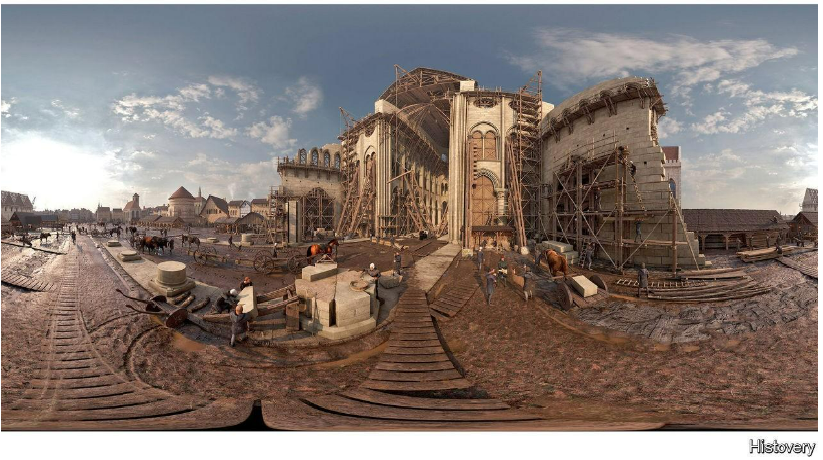
The historical breadth and attention to detail is remarkable. Over two years Histovery worked with film-makers, 3d-artists, architects, historians and scientists to piece together nearly a millennium of history. The idea is to offer something more immersive and more modern than many traditional exhibitions. “We have to find other ways to bring culture to the people; to propose new digital experiences,” says Bruno de Sa Moreira, the outfit’s co-founder and ceo.
What he calls an “augmented visitor experience” turns a trip to the cathedral, albeit virtual, into something closer to a video game. On screen, pop-ups reveal nuggets of history and each scene has its own soundtrack. A virtual treasure hunt for the panels of one of Notre Dame’s exquisite Rose windows keeps children entertained. The interactive element is key, explains Edouard Lussan, Histovery’s other co-founder and director of production. “This is why we think we are going to catch a much younger audience…a church could be difficult for younger people to engage with.” Augmented reality appeals to a wider audience than virtual reality, which often involves an isolating, clunky headset and, for some users, feelings of nausea.
The exhibition is free to visit thanks to sponsorship from L’Oréal Group, a beauty behemoth. Businesses such as L’Oréal and their billionaire owners (who pledged vast sums of money in the wake of the fire) were criticised by many on the left in France and elsewhere for their willingness to act on behalf of ancient buildings but not when it came to pressing social concerns such as the environment or poverty. Such arguments do not hold much water, however. Besides the economic rationale—Notre Dame attracts 13m visitors every year—the cathedral is a symbol for French people and Catholics around the world. Around €80m ($87m) of the roughly €850m that has been donated to the reconstruction efforts have come from small gifts.
Exhibitions such as this one will no doubt become more common. Augmented reality has potential to transform the way people engage with historical sites: picture reclining with Romans in Pompeii or staring at the lions and lapis lazuli blue of the Gates of Babylon in Iraq. The technology is already being implemented in museums and galleries around the world. Seeing history on a screen or projected in 3d, though, may not be to everyone’s liking. What about those who prefer to fill in the gaps with their imagination? “We’re here to serve the experience, not replace it,” says Mr Lussan.
“Notre-Dame de Paris: the Augmented Exhibition” continues at the Collège des Bernardins in Paris and the National Building Museum in Washington, DC. It will open at Palais im Grossen Garten in Dresden from August 5th and Shanghai later in 2022
Source: The Economist. (2022, April 14). The history of Notre Dame cathedral, in augmented reality. https://www.economist.com/culture/2022/04/14/the-history-of-notre-dame-cathedral-in-augmented-reality
In recent years, advancements in technology have become increasingly essential to visitor experiences and museum operations around the world. From providing immersive digital engagements, curating the visitor journey, improving wayfinding, and streamlining operations, technology has diverse and growing applications in the museum ecosystem. Now, more than ever, it is imperative that museums stay up to date on the latest trends in technology. CambridgeSeven’s diverse portfolio of cultural projects, ranging from Science and Sports Heritage Museums, to our continued expertise in Aquarium design, has provided us keen insights into the latest technologies being integrated in the museum environment. Here’s the “top-ten” list of technologies that we are integrating into our projects:
1) Personalization / Wearable Devices: Utilizing RFID badges, bracelets or cards worn on the body to activate chips and other technologies, we create a more powerful connection between the visitor and the story. Providing a personal link deepens the visitor’s understanding and connects them at a more resonant level with the narrative content. For example, the RFID approach makes creating a personalized scavenger hunt possible. We are currently developing just such an interactive at the Broad DNAtrium Museum where visitors use their “lab card” and participate in the scientific discoveries that led to the advancements in understanding inheritance and genetics.
2) Augmented Reality / Virtual Reality: Imagine being surrounded by your favorite hockey team while standing on center ice or seeing yourself in a science laboratory side by side with Watson and Crick building a double helix model. With Augmented Reality, museums can superimpose their virtual world right over what is actually in front of visitors, bringing exhibits and artifacts to life in new and immersive ways.
3) Gesture Technology / Non-touch Interactives: Given the present COVID-19 crisis and the heightened concern of infection risk, touchless technologies and proximity sensors like Gesturetek, Kinect and radarTouch, as well as other technologies, will likely gain popularity. These technologies are becoming less expensive and also increasing their sensitivity and accuracy which will result in more exciting visitor engagement.
4) Mobile Technologies: Mobile apps for museums are not new, but now museums are exploring ways to expand and integrate mobile technologies for a more customized experience. For example, using mobile phone technology, a museum can offer immersive guided tours and an AR experience that enriches the exhibit content. And mobile ticketing technology streamlines the process, minimizes queuing and offers touchless payment options.
5) Indoor GPS tracking systems: Museums use this increasingly affordable technology to track movement within the facility, which allows them to confirm how well a storyline works, better understand dwell time or even if the experience should be modified to help clarify the message.
6) Artificial Intelligence: When it comes to museums, AI can be incorporated across the spectrum, from visitor experience to behind the scenes, and the technology can come in many forms. Current AI use for operations includes visitation forecasting and understanding collections by using machine vision to help recognize, classify, or pattern images. On the public side, AI offers many unique opportunities to engage visitors. In 2018 the world was introduced to Pepper, a humanoid robot developed by the Smithsonian. Pepper answers visitors’ questions and tells stories using voice, gestures, and an interactive touch screen. Visitors love to interact with Pepper and the bot will even pose for selfies! AI also offers visitors the potential to interact with historical figures.
7) LED / Laser Projection Technologies: We continue to explore and push the boundaries of how advanced lighting technology and laser projection can create powerful, immersive museum environments. Using large-scale tensile fabric screening, coupled with unique media laser projections, we immerse the visitor in a story that captures the imagination.
8) Virtual Touring:We are starting to see that the future for museums and attractions may well need to allow for expanded non-physical, off-site experiences. To that end, utilizing in-house technologies and creating exhibit designs geared toward virtual touring that can account for at-home technology interfaces should be an integral part of the new museum design development from the conceptual level through project completion.
9) Flexible Technology Exhibit Platforms: With our media partners, we are developing software and designing exhibits that can not only accommodate content flexibility but also allow exhibits to easily change. Newer technologies allow us to convert exhibit curriculum into entirely new programs for focus groups, education, research and special events. Utilizing remote program technology offers museums and attractions the ability to be more flexible and responsive to new and varied audiences.
10) Augmented Reality Selfie-Moments: With Social Media now the largest platform for human communication and connection, the “Instagram” moment has become a “must have” during the exhibit journey. With advancements in digital projection technology more frequently incorporated into museum exhibits, personalizing the visit has become more common. Now, what had been primarily an analogue experience is shifting into the digital realm allowing virtual “try-ons” where visitors can place themselves in an historic exhibit virtually or even insert themselves in an historic video moment. In all aspects, this technology is expanding the variety of opportunities in which visitors can engage and share in a museum’s brand and mission.
Source: Gazaille, C. (2020, June 24). The Future of Technology in Museums. CambridgeSeven. https://www.cambridgeseven.com/about/news/the-future-of-technology-in-museums/

